The Bechdel test has helped raise awareness about the dearth of strong, autonomous women in movies, and while the Bechdel test is monumentally important, there is another group often neglected in discussions of social equality: ROBOTS.
So I’ve invented “The Botdel Test.” To pass the Botdel test, a work must feature two robot characters who speak to one another about something other than a human being. Now, let’s consider some works that feature prominent robot characters and see if they pass the Botdel test.
1. David from Prometheus
Prometheus features one of the most prominent robot characters in recent sci-fi cinema: David. He dominates the movie’s opening. While the rest of the crew is in stasis, David has the ship to himself, and he passes the time by doing eerie imitations of Peter O’Toole and perfecting his blonde hair. He looks like a normal man (er, a normal, very handsome man) and exhibits a child-like curiosity, making it difficult not to humanize him.

Michael Fassbender, stop making being a bad robot look so good!
Ultimately, though, he does not emerge as a full character with agency. He never speaks to another robot, and his primary role is to serve the evil folks at the Weyland corporation whose best business plan is to capture a killer alien.
Also, David, watching Lawrence of Arabia and bleaching your roots? Really? If you’re going to appropriate human culture, maybe pick a movie less outdated and a haircut less Backstreet Boys-era Nick Carter. If you want to understand human culture, you should watch The Shawshank Redemption or Mean Girls.
Prometheus fails the Botdel test.
Now, on the subject of humanoids…
2. All the Replicants from Blade Runner
I can’t write about robot empowerment without mentioning Blade Runner. The movie’s central concern is robot empowerment — or the liberation of robots from human enslavement and oppression. This premise, however, makes determining whether it passes the Botdel test difficult.
The film offers some of the most dynamic robot characters in sci-fi history (I mean literally dynamic when it comes to gymnastic ninja queen Pris), but every scene focuses on humans: what it means to be human, what distinguishes humans from replicants, why do replicants have way better hair than humans. Sure, the robots have scenes to themselves, especially if you prefer Ridley Scott’s director’s cut and believe Deckard is a replicant, but the conversation never strays from human beings.
There is one exception: when Roy and Pris are alone, they briefly speak of their fallen compatriot, Leon. Blink and you’d miss it. Once Sebastian re-enters the room, they change the subject and start asking about Eldon Tyrell.
Blade Runner barely passes the Botdel test, but it basically has to because it’s the reason for the invention of the Botdel test so that counts for something.
The future looks grim for robots. Just take a look at…
3. TARS from Interstellar
TARS is a stark departure from robot representation in recent sci-fi cinema. While his speech patterns humanize him, his appearance is distinctly un-humanoid. In fact, he unnervingly resembles Minecraft’s Enderman.
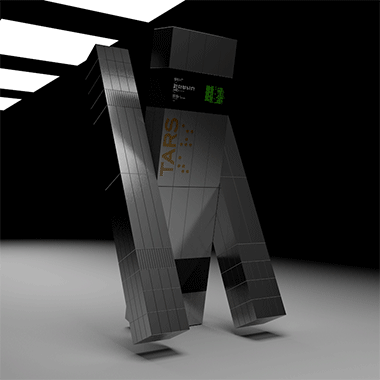
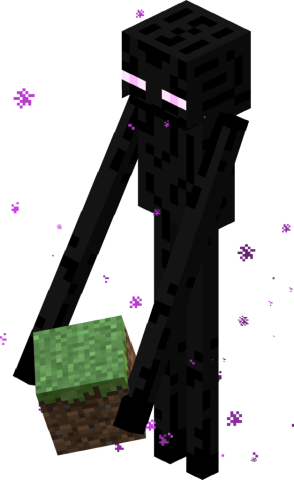
TARS is a step backwards in the robot equality movement. He doesn’t represent a nuanced portrait of artificial intelligence. The movie spends no time addressing his self-awareness or point of view or his relationship with his fellow robot, CASE. Instead, the movie uses him merely as fun garnish. Sure, the crew members are fond of him, but only because he is there to dutifully serve them and provide some light comic relief at their behest.
Interstellar totally fails the Botdel test.
Speaking of outer space…
4. Legion from Mass Effect 2 & 3

Does this unit have a…unit?
Legion is one of the main characters in the second and third Mass Effect installments. Besides the other 1,183 geth programs inside him, there aren’t many other robots for Legion to talk to.
NAY, you cry out, Legion spoke to Commander Shepard and Commander Shepard becomes part-robot after Cerebrus saved her life!

Pssst, Shepard, your epidermisepidurmis is showing.
I said robots, not cyborgs. Get your shit together. You can’t be making rookie mistakes like that this far into the article.
Legion does have EDI to talk to, but they usually converse about humans (or quarians or organics or some other fancy word Mass Effect made up). When they don’t talk about humans, they turn on each other, trading barbed insults. Legion and EDI, you should be building each other up, not tearing each other down!
Mass Effect fails the Botdel test.
If I’m going to talk about robots in video games, I must mention…
5. GLaDOS and Wheatley from Portal 2
This list would not be complete without the beloved Portal robots. Especially GLaDOS. Her droll game is so good, I wish she were real so we could hate-watch bad TV and make fun of it together. I know that her dry delivery and impeccable timing are just products of advanced programming, but it is nearly impossible not to humanize her. That’s why I had to run Portal 2 through the Botdel test.
More than one prominent robot character? Check. Do they talk to each other? Check!
 Wait. Doesn’t Wheatley depend on Chell to press the stalemate resolution button that completes the core transfer? And when Wheatley and GLaDOS argue, they talk only about Chell and the humans who designed them. While players see both robots through their ups and downs and feel for them in spite of their homicidal tendencies, GLaDOS and Wheatley surprisingly and unfortunately do not meet all the requirements of the Botdel test.
Wait. Doesn’t Wheatley depend on Chell to press the stalemate resolution button that completes the core transfer? And when Wheatley and GLaDOS argue, they talk only about Chell and the humans who designed them. While players see both robots through their ups and downs and feel for them in spite of their homicidal tendencies, GLaDOS and Wheatley surprisingly and unfortunately do not meet all the requirements of the Botdel test.
Though it pains me to say it, Portal 2 does not pass the Botdel test.
Onto another famous robot duo…
6. WALL-E from, you know, WALL-E
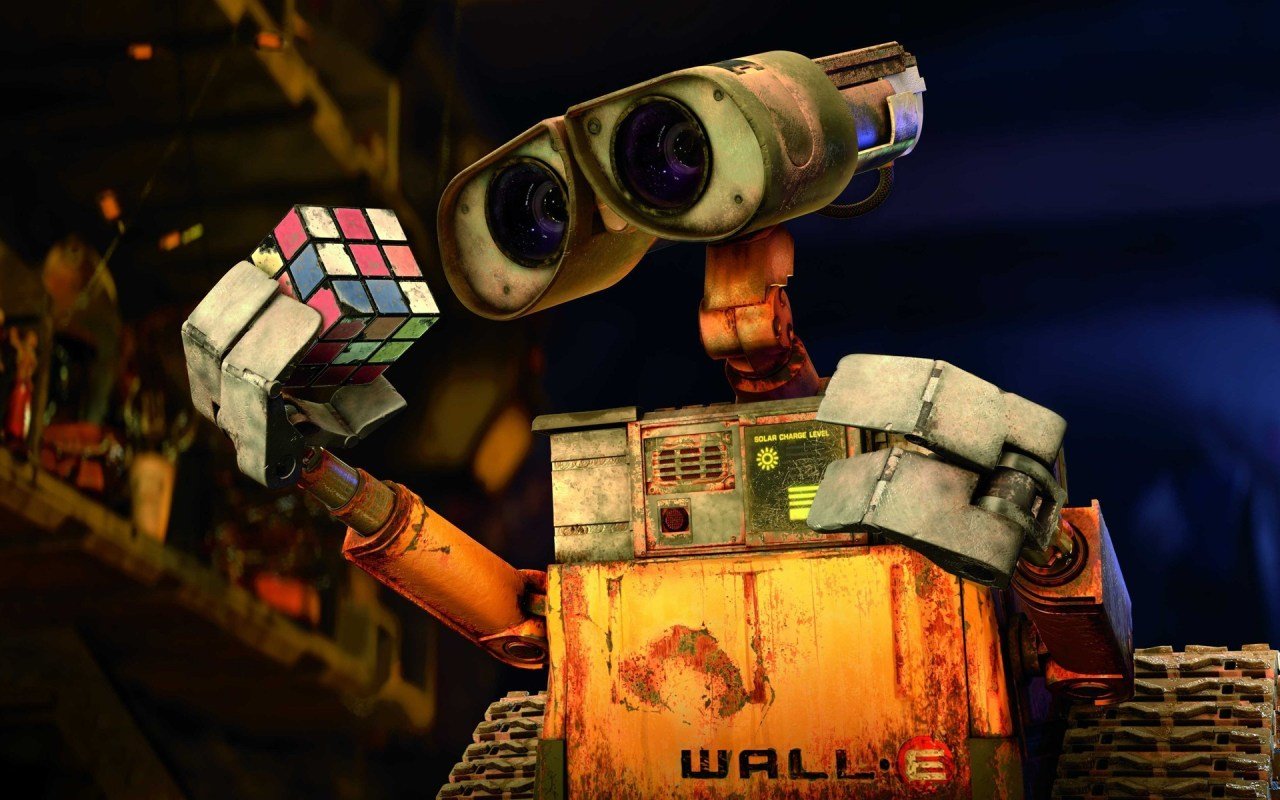
Robots are obsessed with 20th Century nostalgia.
Wall-E is another robot who attempts to become more human by watching weird classic movies. BUT Wall-E’s primary conversation partner is Eve, another robot! He passes the first part of the Botdel test!
This is when it gets tricky. The movie seems like a promising candidate for the Botdel test because it doesn’t give people much screen time. And when they do get their moment, human beings come across as lazy and short-sighted, making the robotagonists (robot protagonists, you’re welcome) all the more likeable and heroic.
But the only thing Wall-E and Eve say to each other is their own names (we assume their attraction is mostly physical). And the two of them spend most of the movie dutifully performing their functions to save Earth from the senseless destruction mankind wreaked on it. All these two do is serve human beings. Wall-E and Eve are like if Sisyphus created robots to push the boulder up the hill for him. If Sisyphus could build robots. And the giant boulder was made of trash. I swear this analogy works.
WALL-E is complicated, but ultimately it fails the Botdel test.
Before you give up hope, there is one piece of popular media that I believe passes the Botdel test with flying colors…
7. C3PO and R2D2 from Star Wars

Check out C3PO’s hoverhand.
Star Wars was ahead of its time in many respects: It featured a kick-ass princess; it understood how crucial toy sales were to a franchise; and, most importantly, it portrayed a complex relationship between two robots.
The original series boasts many scenes where C3PO and R2D2 bicker about stuff besides their pesky human friends. Often, we don’t understand everything they say to one another because they don’t practice code-switching to seem comprehensible by their human counterparts. Yes, I used the term “code-switching” in an article analyzing the fair representation of fictional robots in the media. Finally putting my college degree to good use!
C3PO and R2D2 prove that robots have their own stories to tell and that including these stories would enrich any narrative.
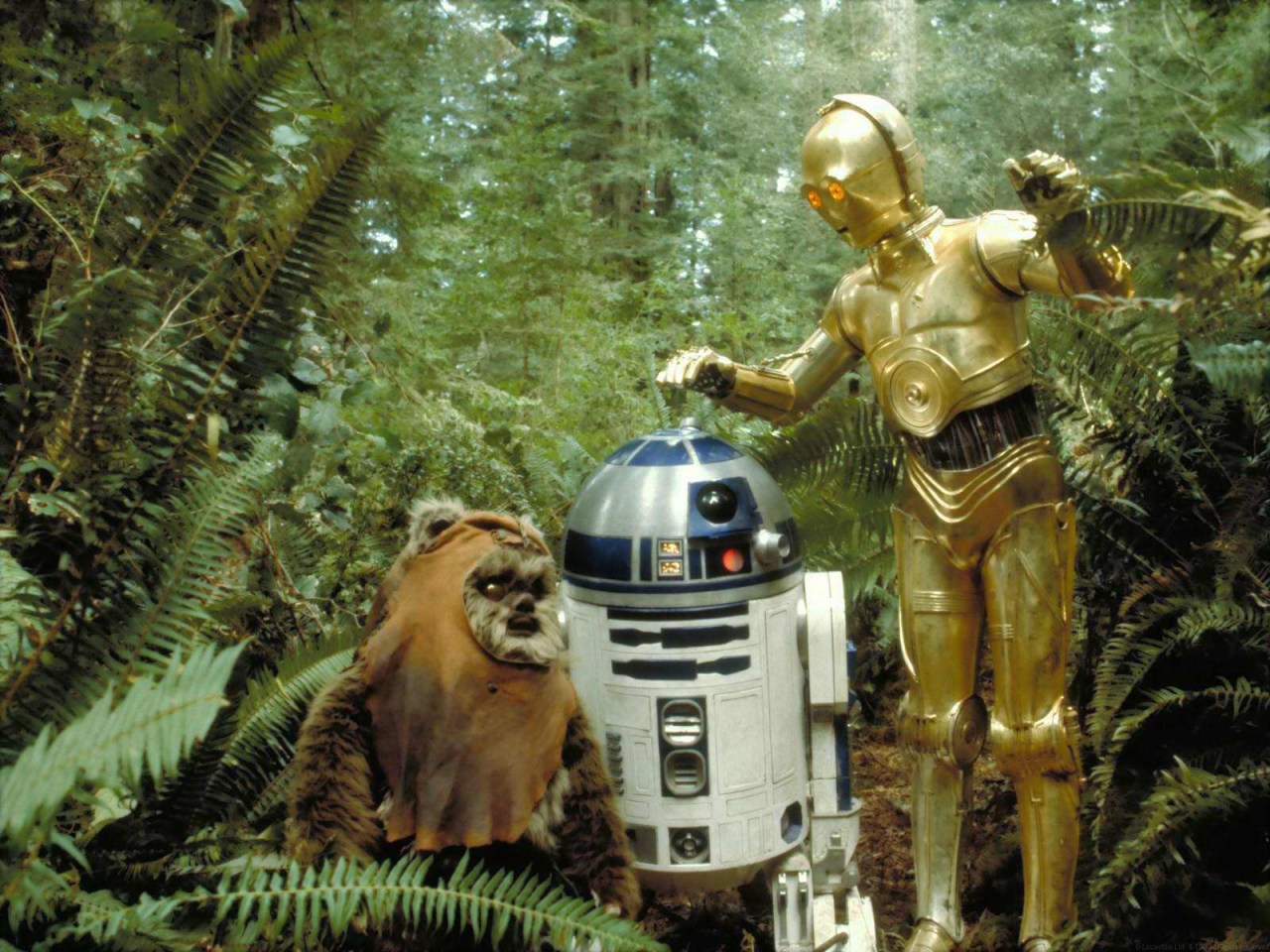 Only the ewoks understood how special C3PO was.
Only the ewoks understood how special C3PO was.
Congratulations, Star Wars, you pass the Botdel test!
I hope these examples have made you reconsider how robots are treated in popular media.

Don’t mention his contributions to robot empowerment. Oh wait, you didn’t.
Feel free to discuss the Botdel test with your friends! One of my favorite group activities is trying to think of movies that pass both the Bechdel test and the Botdel test. Once you start thinking about how artificial intelligence is represented, you will find the majority of sci-fi movies shortchange robots, and I believe these regressive movies will be forgotten, lost in time… like… tears in rain.
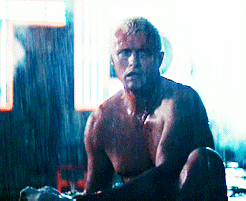
Roy, put the dove down and step away. Step away. From the dove.
Chloe Cole is a writer at Dorkly. When she isn’t working and arguing with her co-workers about 80s horror movies, she enjoys arguing with her friends about 80s horror movies. And coming up with crazy science fiction premises – like, what would the world be like if every time you orgasmed, you had a 50% chance of blowing up? Also, she doesn’t have any robot servants at home, and neither should you. Check out her work on Dorkly!
Are you following The Mary Sue on Twitter, Facebook, Tumblr, Pinterest, & Google +?









Published: Mar 30, 2015 08:00 pm